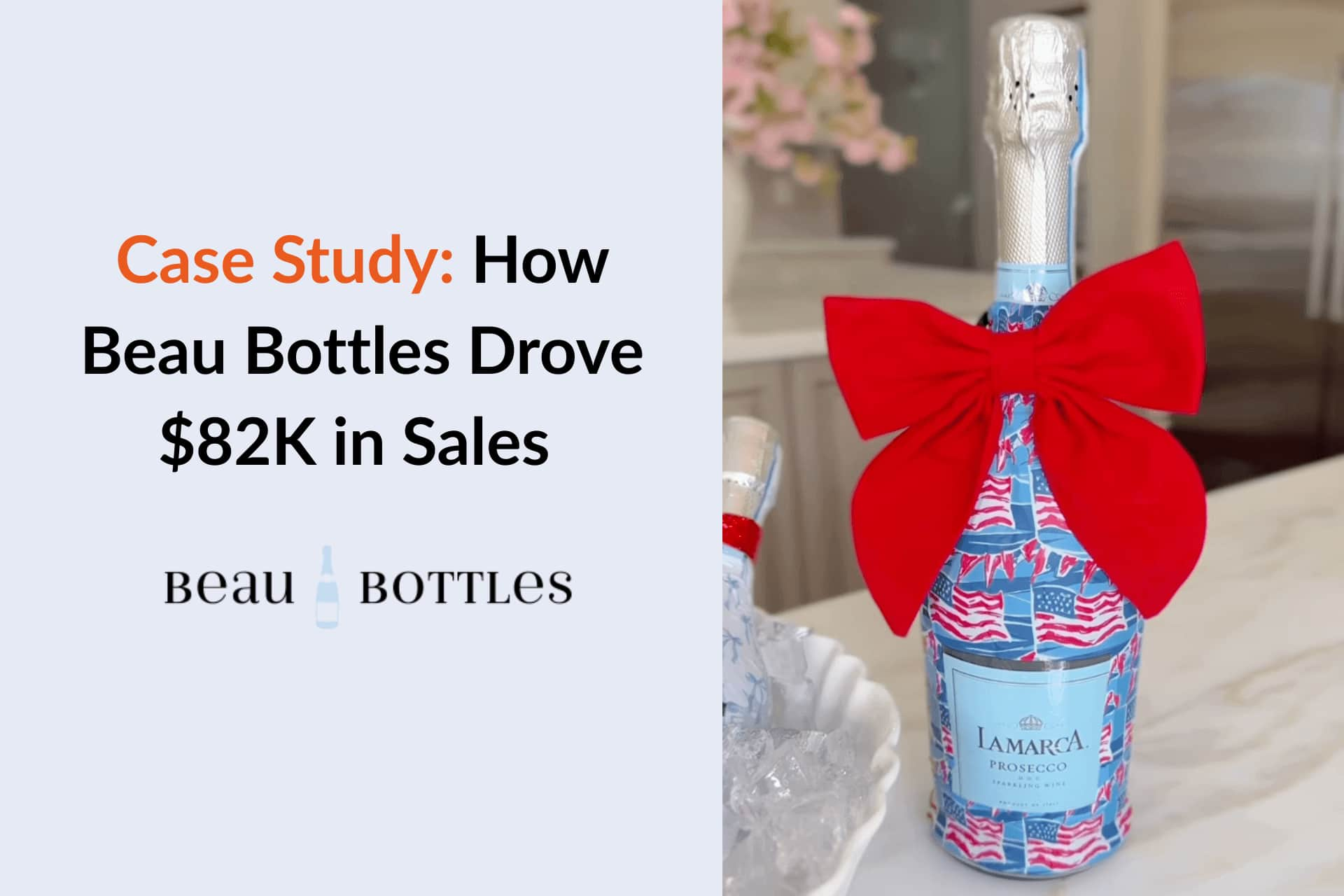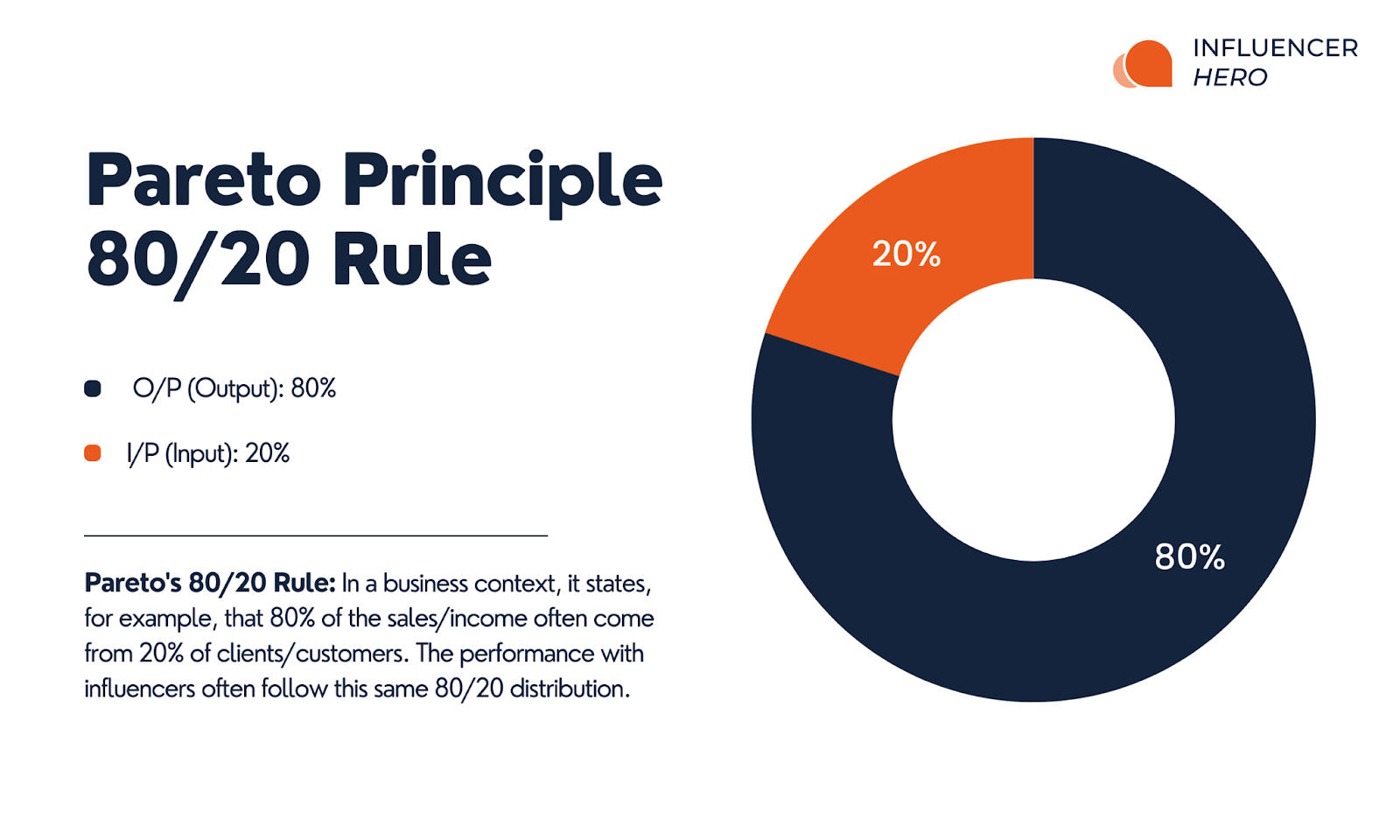





If you’ve ever felt like your influencer results are inconsistent, here’s the data-backed truth: only a small percentage of creators drive the majority of your revenue. This isn’t a guess — it’s the Pareto Principle in action.
Across hundreds of influencer programs, the pattern is remarkably consistent:
Most brands fail not because influencer marketing “doesn’t work” …but because they stop testing before they find their high performers.
This guide will show you how to structure influencer campaigns around the 80/20 rule, how to run profitable testing, and how to identify the creators who will fuel long-term, repeatable growth.
What if we told you that only a small percentage of your influencers drive most of your sales?
If you’ve ever felt like only a few influencers truly move the needle… you’re right.
That’s the Pareto Principle in action. In influencer marketing, it means roughly 20% of the creators you work with will drive about 80% of your revenue. This small group of high performers is where the real growth happens — the creators you should nurture, reinvest in, and bring back for your big campaigns.
And the pattern is becoming even more intense. In many programs today, the classic 80/20 split is shifting toward 90/10 or even 99/1, with just a handful of creators generating the overwhelming majority of sales and conversions.

Across almost every successful influencer program, the pattern is always the same:

The issue? Many brands stop too early. They test a few influencers, see average results, and conclude that “influencer marketing doesn’t work.”
The truth? They just haven’t reached their top 20%.
Once you understand that only a fraction of influencers truly drive performance, your entire approach changes.
Your program should have two core stages:
This is your exploration phase where you find which creators actually convert.
Don’t panic if most creators underperform; the few high performers will cover the cost of your testing phase.
Once you’ve identified your top 20%, double down:
This is your growth flywheel where loyalty and data-driven re-engagement turn one-off posts into recurring revenue.
Based on thousands of campaigns, test performance typically looks like this:
The insight? Your best creators financially carry the program. This is why a wide test group is essential — small tests almost always fail.
Once you’ve collected performance data, it’s necessary to analyze profitability across all influencers combined, not just individually. Here you’ll often have 3 results:
With Black Friday and Cyber Monday around the corner, here’s an example of how the 80/20 rule can make or break your holiday strategy.
One UK-based client generated $687K in sales during Q4 - with influencer marketing as their only active channel. Their success was due to starting early, testing broadly, and doubling down on their top performers.
By using Influencer Hero for discovery, outreach, and analytics, they:
When you focus on your top 20% early, you can maximize results during the biggest shopping weekend of the year.
If you want predictable and scalable influencer performance, the formula is straightforward: start by testing broadly, then identify your top-performing 10–20% of creators. Once you know who consistently drives results, reinvest in them aggressively and focus on building long-term partnerships that extend across multiple campaigns and seasons. Repeat this cycle every quarter to continually refresh your pool of high performers and maintain momentum.
Ultimately, the brands that win aren’t the ones who get lucky on the first try—they’re the ones who commit to the process long enough to uncover the creators who truly move revenue.
If you want help finding those top performers faster, book a free demo with Influencer Hero and see how brands use AI-driven workflows to discover, track, and scale their highest-ROI creators.

For statistically meaningful results, test 50–100 influencers. Smaller tests often produce misleading conclusions.
Conversions, engagement-to-conversion ratio, AOV, click-through rates, and content quality.
Top creators typically deliver 5–10X ROAS and generate recurring revenue, making them the foundation of long-term growth.
Sometimes, yes — they can provide UGC, ad assets, or awareness, even if they don’t convert directly.
Re-engage top creators, increase posting frequency, add affiliate incentives, and involve them in key launches like Black Friday.



Schedule a Demo with one of our media experts below.